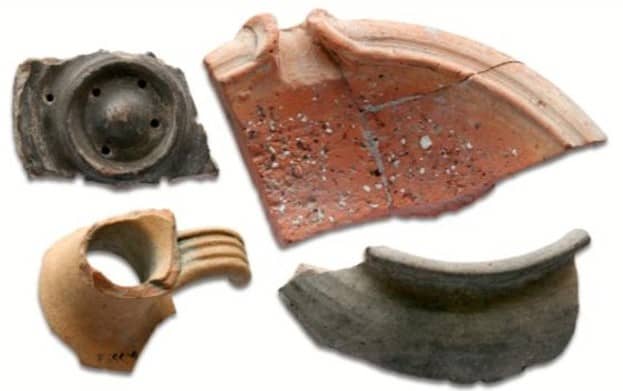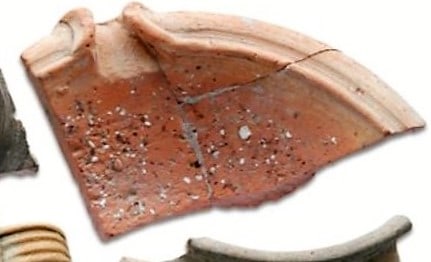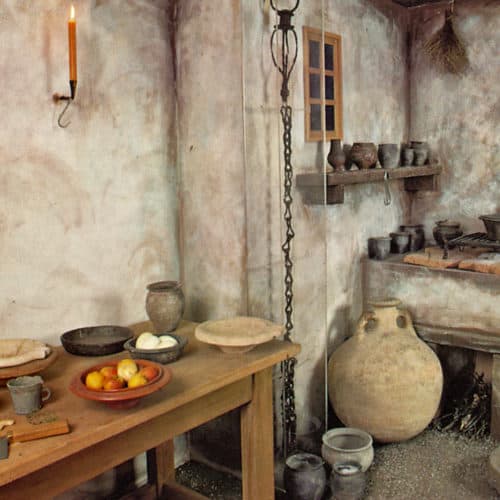Romans 15: mortaria
The roughest piece of pot is part of a Roman mortarium.
Mortaria were large shallow round pottery dishes, typically about 50cm in diameter. They were made from hundreds of tiny pieces of sharp gritty stone sticking out of the surface… and were a crucial bit of kit in the Roman kitchen.
A handful of edible seeds, herbs or grain was placed in the mortarium - sometimes with water, olive oil, honey or wine added.
This mixture was then pummelled with a pestle (a heavy round wooden or metal tool with a handle) until it was crushed into tiny pieces or a paste and was ready to be added to dishes.
The spout, made it easy to pour out some of the more liquid mixtures at the end of the process!
In the homes of wealthy Romans this would have been one of the many jobs of a kitchen slave.
Some people still use a 'pestle and mortar' in their kitchens today.

The other pottery fragments in the photo are…
Part of a strainer (top left)
A small jug for olive oil or similar (bottom left)
The rim of a black courseware cooking pot (bottom right).
All four fragments were discovered by archaeologists at Folkestone Roman Villa in 1924.
The mortarium in this kitchen is a different colour, but the shape is the same as the one in the first photo.
Fascinating facts
The Romans introduced many foods to Britain, including chicken, rabbit, apples, pears, carrots, grapes, lettuce, parsley and edible snails.
Image copyright: Canterbury Archaeological Trust


